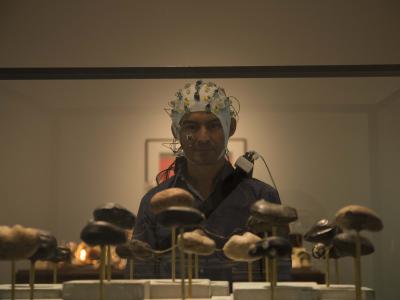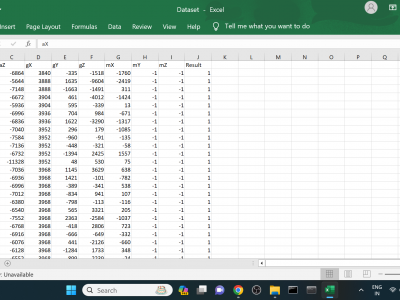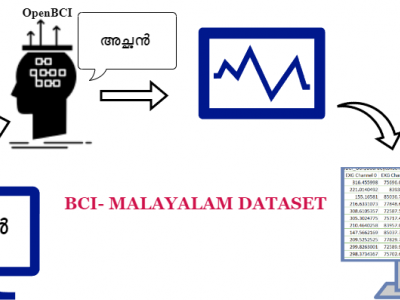Wearable Sensing
The video demonstrates an accurate, low-latency body tracking approach for VR-based applications using Vive Trackers. Using a HTC Vive headset and Vive Trackers, an immersive VR experience, by animating the motions of the avatar as smoothly, rapidly and as accurately as possible, has been created. The user can see her from the first-person view.
- Categories:
 703 Views
703 ViewsRecent advances in scalp electroencephalography (EEG) as a neuroimaging tool have now allowed researchers to overcome technical challenges and movement restrictions typical in traditional neuroimaging studies. Fortunately, recent mobile EEG devices have enabled studies involving cognition and motor control in natural environments that require mobility, such as during art perception and production in a museum setting, and during locomotion tasks.
- Categories:
 3646 Views
3646 Views
Highly accurate and lightweight automated movements quality assessment is essential for home rehabilitation patients. We propose a method for the assessment and quantification of movement quality based on the differential feature segments, the objective is to emulate the expert evaluations of physicians as closely as possible with minimal data features. Employing the Gaussian mixture model (GMM) to divide continuous trend time-series data into fragment features, defined as feature segments.
- Categories:
 36 Views
36 Views
Autistic people typically need methodical support as they explore and interact with their immediate surroundings and the objects associated with them, emphasising the importance of spatial knowledge and cognitive skills in improving and understanding their surroundings. The objective of this research paper is to present a conceptual and technical framework that could be of significant assistance in developing spatial ability and cognitive skills in autistic people.
- Categories:
 81 Views
81 Views
The performance, repeatability, and stability of the sensor were measured,Sensors are applied to gesture recognition and human-computer interaction. By utilizing wavelength division multiplexing technology, multiple sensors measure finger movements and improve recognition accuracy through backpropagation neural network algorithms. Five commonly used gestures were recognized and the sensor posture was determined based on light intensity.
- Categories:
 41 Views
41 Views<p><span style="color: #3c4043; font-family: Inter, sans-serif; font-size: 14px;">The dataset is collected from 3 MPU9250 sensors connected simultaneously on different positions of the hand. One sensor was placed on the wrist, another between wrist and elbow and another between elbow and shoulder. The dataset contains a 3-axis accelerometer, 3-axis gyroscope and 3-axis magnetometer readings along with a result column in which '1' denoted shaking hand and '0' denoted stable hand.
- Categories:
 315 Views
315 Views
This dataset includes input dynamics (keystroke, touch, and mouse), affect data (physiological measurements), video, and text data collected from research participants aged 6 and older. The dataset includes data from a diverse set of participants, identifying as Asian, White, Middle Eastern or North African, Black or African American, and Hispanic, Latino, or of Spanish origin). Additionally, participants represent both iOS and Android users.
- Categories:
 121 Views
121 Views
A specially designed waist-worn device with accelerometer, gyroscope, and pressure sensor was utilized to collect information about 18 ADLs and 16 fall types. The falls protocol has been performed in our lab to replicate realistic situations that typically affect workers and older people. In contrast to other datasets that are accessible to the public, we included a new task in the falls, syncope, since it has a high mortality rate among the elderly and is linked to falls. As such, we must take it into account and include it in our fall detection system.
- Categories:
 104 Views
104 ViewsIn today’s context, it is essential to develop technologies to help older patients with neurocognitive disorders communicate better with their caregivers. Research in Brain Computer Interface, especially in thought-to-text translation has been carried out in several languages like Chinese, Japanese and others. However, research of this nature has been hindered in India due to scarcity of datasets in vernacular languages, including Malayalam. Malayalam is a South Indian language, spoken primarily in the state of Kerala by bout 34 million people.
- Categories:
 617 Views
617 Views


